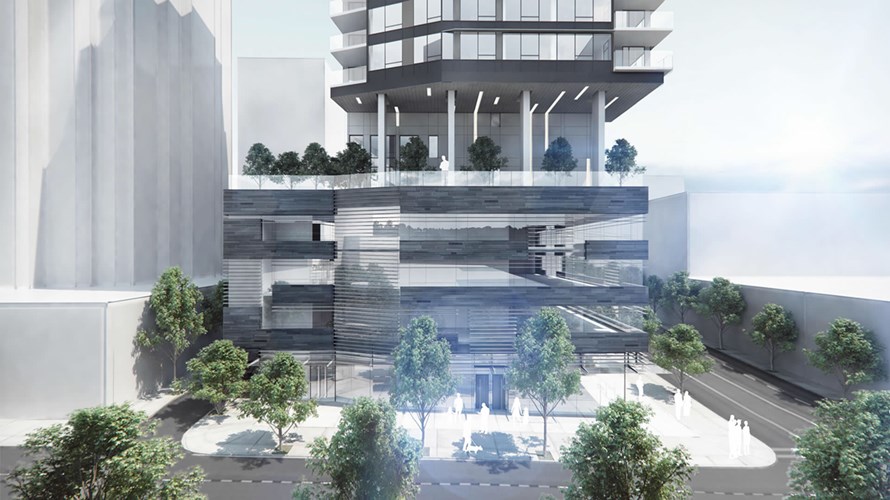From Vancouver to Winnipeg, mixed-use developments are becoming the norm as investors and developers aim to maximize values and zoning, but there is a price to pay for merging disparate sectors into a single real estate play, a veteran property manager says.
The trend is not new: residential above retail has been a Main Street mainstay for centuries, but the new take on mixed use embraces mingling of virtually every real estate sector.
In downtown Vancouver, Boffo Developments is constructing the Smithe, a development that encompasses more than 31,000 square feet of office space over three levels, two ground-floor retail spaces and nearly 100 residential units. A few blocks away, a boutique hotel takes up a third of the space in the new Exchange office tower.
In East Vancouver, Wall Financial has mixed two floors of industrial space, offices and retail, all strata, beneath 210 residential condominiums and 70 units of social housing in the biggest industrial-residential project in British Columbia. Across Metro Vancouver light industrial and offices are blurring into a single entity.
In Calgary, RioCan Real Estate Investment Trust is leveraging its land-heavy Brentwood Village Shopping Centre into a $70 million redevelopment that will mix condo towers with the shopping centre.
Winnipeg’s Bishop Grandin Crossing is among the residential subdivisions that now include a mixed-in retail village, and mixing stores, offices and homes bedrocks the city’s Exchange District redevelopment.
Real estate trusts and pension funds across Canada are combining homes and workspace to add value to existing properties, according to Corrado Russo, senior managing director, investments, and global head of securities at Timbercreek.
“There is a global trend of people wanting to live, work and play in the same location,” he said.
Yet mixing uses also requires specific skills in property managers – and that is a problem, said Warren Smithies, senior vice- president of Vancouver’s Martello Property Services. Smithies manages more than 500,000 square feet of real estate, including residential mixed with retail and offices, and said the complexity of such facilities has led to a skills shortage in the industry.
“There are not enough new people coming into property management with the skill set necessary to handle these large buildings, which are worth hundreds of millions of dollars potentially,” said Smithies. “It is putting the owners of the strata at risk for mismanagement of their asset over the life cycle of the building.”
He cited an example of a Vancouver building that has three separate entities governing it – a ground-floor retail section with its own strata council, a strata residential section made up of apartment owners and a submarket of social housing units operated by a government agency.
Retailers want foot traffic in front of their businesses and don’t want to pay for services to the residential component of the building. Residents will be more concerned about noise at night and easy access to their homes.
“The different priorities can lead to head-butting on certain issues,” he said. “Parking can be particularly challenging. Even if there is any sort of maintenance issue like if there’s a leak happening from the residential section into the commercial section, it can be a huge nightmare dealing with that kind of situation where you’ve got multiple insurance companies coming into play, multiple restoration companies. It can get very, very challenging.” He thinks legislation has not been able to keep up with that complexity.
Managing these types of structures is not always an appealing career, Smithies said. The work is typically quite adversarial, and includes lots of evening work to accommodate strata council meetings and councils are looking for the lowest price possible, which leads to cutthroat price competition by management companies and relatively low wages for strata managers.
“In that one building, you have three entirely separate legal titles with three entirely separate governing bodies that all have to work together in a tight space,” explained Smithies. “That can be a big challenge for a lot of people.”
Lillian Tummonds is the general manager of Vancouver’s largest single umbrella of mixed-use properties: Cadillac Fairview’s Pacific Centre, which includes Pacific Centre mall, seven connected office towers and the Four Seasons Hotel – three city blocks in all.
The benefits outweigh the challenges, she maintained.
“It’s beneficial for all the occupants and shoppers; it’s kind of synergistic to have everything tied together,” Tummonds said.



